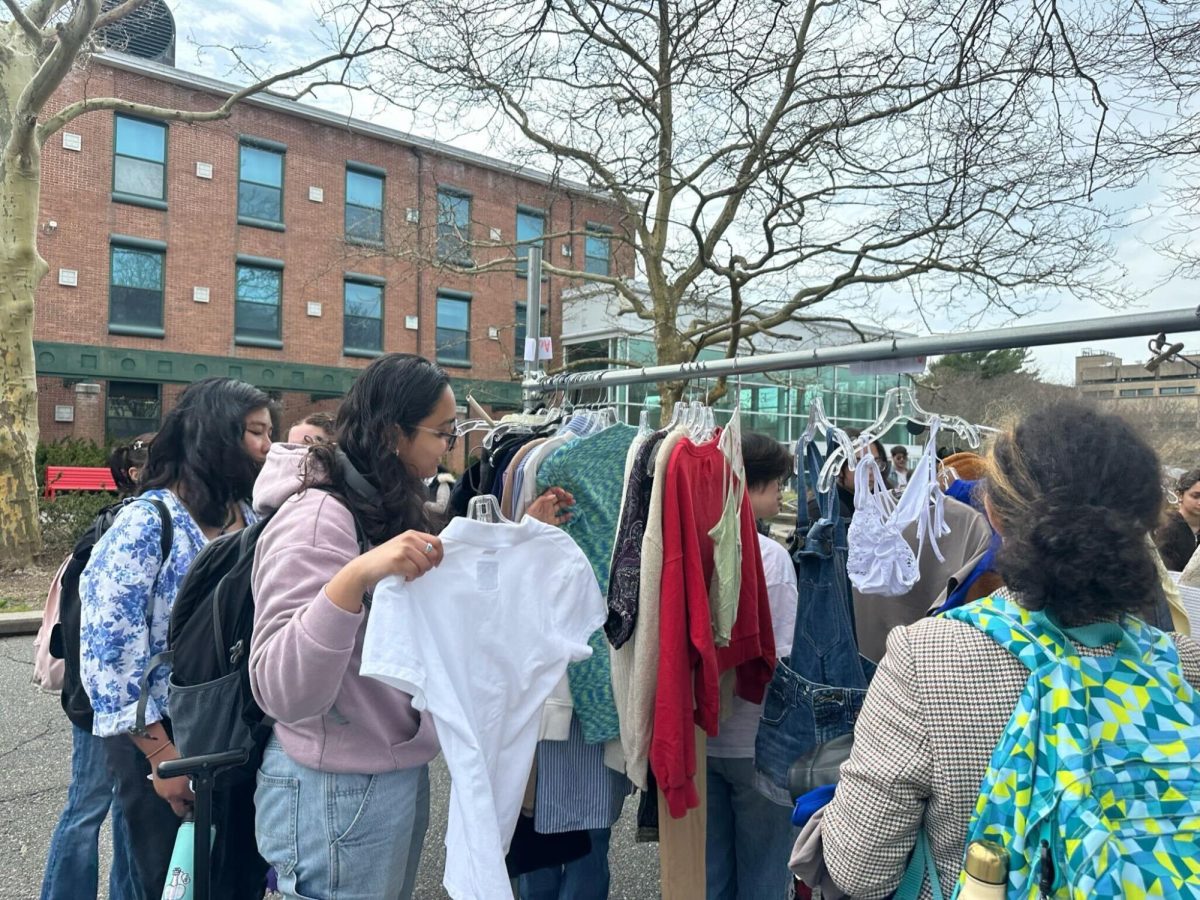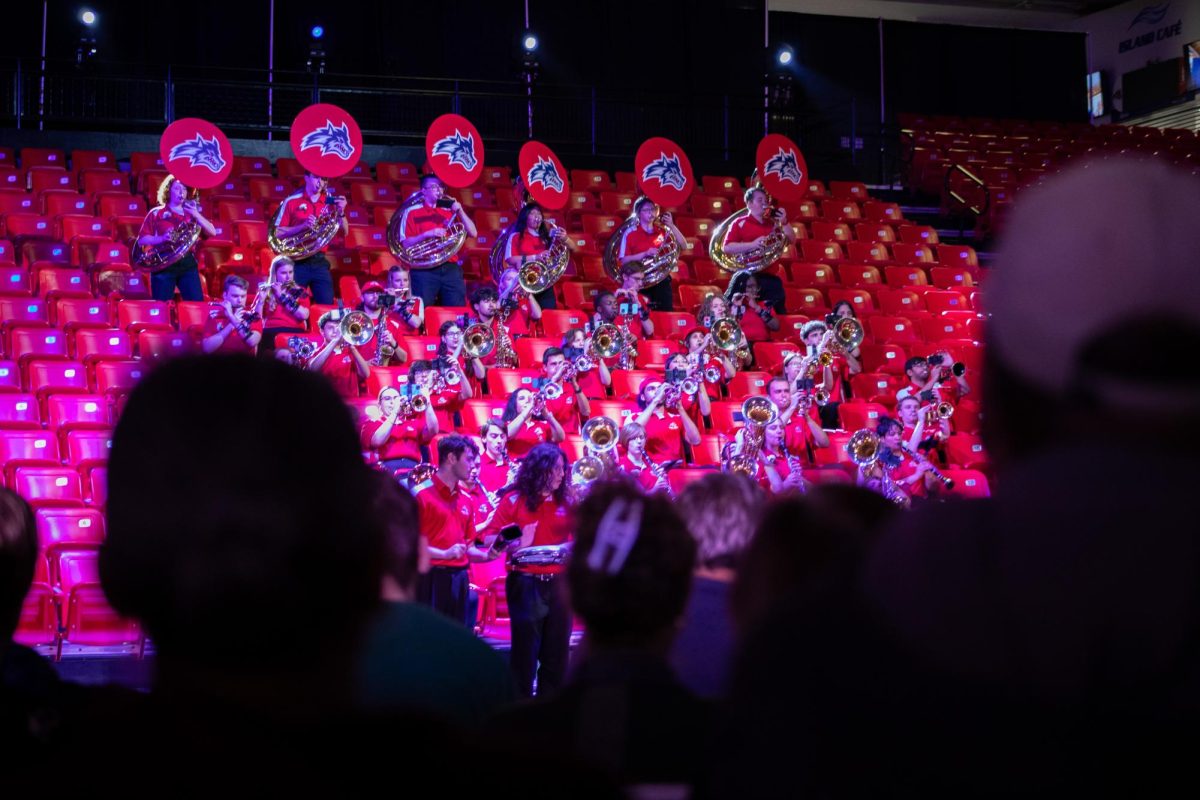
On Tuesday, Feb. 1, the Department of Music welcomed eccentric performer Judy Dunaway to “Earfest” at the recital hall in the Staller Center for the Arts.
Judy Dunaway is a sound artist best known for her unconventional approach at producing music. Her instrument of choice is latex balloons, and she has been studying the craft for decades. Dunaway received a Ph.D. from Stony Brook University and has performed at places such as Columbia University and the Juilliard School of Music. She presented at “Earfest” to share her unique expression of self and improvised compositions with the students in the Department of Music.
Living in New York City throughout the late 1980s through the early 1990s, Dunaway was inspired to explore working with latex balloons as a result of living in the midst of the HIV/AIDS epidemic. As she shared at “Earfest,” she had witnessed many friends’ losing their lives in a short time. “Some would get diagnosed and would pass away after a week,” Dunaway said. The only solution that came about at the time was latex condoms.
Explaining the origins of latex, Dunaway was drawn to the facts and had found a way to connect to it creatively. Natural rubber latex derives from a species of a rubber tree in the rainforest. The latex sits just below the bark and is used to protect the tree if need be. Dunaway connects this to her art by saying, “And the rainforests are the lungs of the Earth,” implying the importance and connection that latex has to everyone.
While this was certainly an eclectic experience as an audience member, it became even stranger when Dunaway further explained her inspiration of using latex balloons. She connected it to oppression by the church against women and anti-war art movements such as Dada. “Art has been made in protest like in the famous anti-war movements, Dada, during the first World War,” Dunaway said. “Stopping performance of music in the church was a way to oppress sensuality and women.”
Once the performance she composed began, the confusion continued. Two full grown male adults in all white with no shoes or socks came on the stage and dropped balloons slowly onto a drum. Their faces were silent and serious. Then they stepped forward and pulled the black sheet up from the floor to reveal two long balloons. They waved the long balloons around in rhythmic motion. These artistic movements were very sharp and choreographed in such a way that created rhythmic sound. Many people in the audience pondered the meaning and nature of the performance while others giggled in confusion. These strange instances continued until the composition ended.
This was most certainly a unique experience composed by Judy Dunaway, and one that will not be forgotten.


















